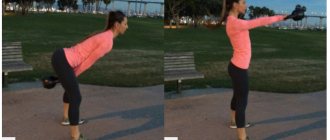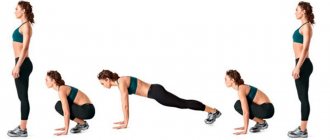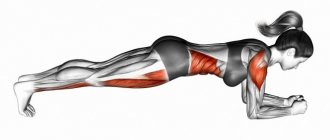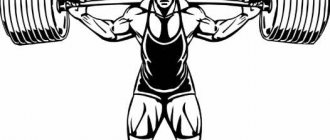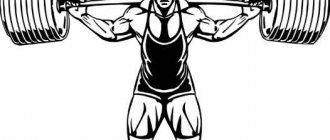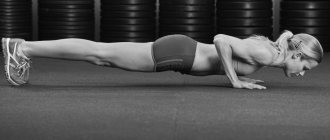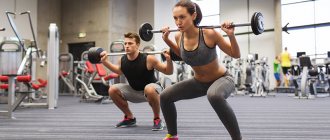If you are interested in fitness activities, but have limited funds for the gym or expensive home exercise equipment, calisthenics training can be a great help for you. What is this, you ask? Then, before we get to calisthenics and training programs for beginners, let’s get to know it better.
What is calisthenics?
This is a set of physical exercises that use your own body weight as a strength load with a minimum amount of auxiliary equipment. But many exercises can be done simply using your own weight. Calisthenics exercises are designed to strengthen physical strength, coordination, speed, flexibility through simple physical movements: pulling, pushing, jumping, running, and so on.
Performing calisthenics exercises regularly and with optimal load can bring many benefits for the development and strengthening of the muscular system, posture and other characteristics of the level of physical development. The word “calisthenics” came to us from Ancient Greece and is translated from two Greek words “strength” and “beauty”. That seems to be all, but I would like to add: technically, all bodyweight exercises are calisthenics exercises.
Benefits of bodyweight training
✅ From a physiological point of view, calisthenics is more suitable for a person, since the joint-ligamentous apparatus is trained simultaneously with the muscles, and there are no distortions in the load.
By following the correct exercise technique, the athlete does not risk causing injury to the spine and joints; on the contrary, the condition of the musculoskeletal system will gradually improve. Known from school, doing pull-ups on a bar and even simply hanging on it will improve your posture and prevent spinal diseases.
Calisthenics can improve the condition of such common problems with the spine as osteochondrosis and protrusions, because strong back muscles are vital in this case.
By training with your own weight, you improve agility, flexibility, endurance, strength and balance. Another important fact is that calisthenics can make you drier and more prominent in a short time.
Why do you need calisthenics training?
Often people are subject to common stereotypes that exercises using a person's own body weight are not the way to increase strength and muscle mass. They believe that calisthenics only brings athleticism and endurance. How wrong they are! Did you know that calisthenics was practiced in ancient times by the Greeks, Spartans and gladiators. And what powerful, muscular figures they had, you can see at least from the surviving sculptures of that time.
Nowadays, all training in the army necessarily includes these exercises. The same goes for outdoor fitness enthusiasts and martial arts fans. Need more examples?
Anyway. Let's leave the lyrics. And let's move on to the reasons why calisthenics classes leave far behind the rest of fitness.
Efficiency
I hope the examples provided above are enough to understand that calisthenics training will make you stronger and leaner. If they were ineffective, then they would not be used by physical education teachers in educational institutions, in the army, in the warm-up of professional athletes, and simply by a large army of fitness enthusiasts.
They won't let you get bored during class
Some people find bodyweight training dull and boring. But this is a big misconception. A large variety of basic exercises, the ability to creatively change exercises in training, a moment of competition if you are training in a group, will turn calisthenics training into an exciting activity.
No gym fees
All calisthenics exercises can be done in any place: on the streets, in nature, in parks, near your home. By the way, now in some cities there are already areas in parks for calisthenics training.
Classes are conducted without expensive simulators
And this is a huge plus. From now on, you won't need exercise bikes, rowing machines or treadmills. The list of necessary equipment is simple and unpretentious (although you can train without it): horizontal bar, gymnastic rings, jump rope, fitball, push-up bars, rubber bands or loops, training ropes. Does this remind you of anything? Personally, it reminds me of school physical education classes, in which most of these accessories were used. I would also like to note that you can create a calisthenics training program without any equipment at all. Most basic exercises do not require this.• You choose when and how to train. It’s very convenient not to depend on anyone and literally create your own training plan.
Budget-friendly and convenient for home practice
Many people who want to engage in fitness cannot find the time or money for a fitness club or do not want to exercise in groups.
Calisthenics is an excellent way to solve such problems. The only thing you may need in this case is just a little space in your apartment.
What's good about the program?
Firstly, the program is very competent. All training variables are outlined - exercises, rest times, progressions, and so on. That is, very clear protocols. Warm-up, cool-down, cardio, strength and technique training are taken into account. This is a really powerful working system. And not a set of exercises written on your knee.
Secondly, all the latest scientific knowledge about muscle strength and hypertrophy is taken into account. The training is structured in such a way that there is a “mechanical tension” (due to basic multi-joint exercises), and the involvement of all types of fibers in the work (due to work “to failure”), and a stimulus for the growth of sarcoplasmic muscle depot (pumping due to high volume work). Again, a well-designed split - each muscle is worked twice a week, which, according to recent research, is an important factor for natural bodybuilding.
Yes, if you want “proof” on the topic of the science of growth factors, then read an article that is quite easy to understand, at the end of which there are links to sources - “Muscle hypertrophy simply and clearly.”
In general, it is obvious that the program is designed with a lot of practical experience and deep theoretical knowledge. Everything is to the point, in short. Let's get started with it.
Basic calisthenics exercises
Can’t wait to find out what kind of magical exercises these are with a lot of benefits for the body? Then let's get started. And I suspect you will be very surprised, since many of the exercises will be not just familiar to you, but very familiar.
Calisthenics exercises are varied and varied. And it will not be possible to cover them all in this short article. But let's try to classify them.
The first division, which I think is very important for beginners, is dividing all exercises into two groups:
- without the use of additional devices and based only on the use of gravity and body weight
- using additional equipment, which I mentioned above
Why is this important for beginners? First of all, the fact that you can start training immediately anywhere. This is very important to evaluate whether calisthenics training is right for you or not.
Second division: into body parts
• biceps • triceps • chest • shoulders • upper body • back • abdominals • lower body • legs Third division: performing exercises with a partner or alone
Let's now look at the basic calisthenics exercises that are definitely included in the training program for beginners
Push ups
Who would have thought that such a familiar exercise is now called calisthenics? In fact, push-ups are an excellent exercise for building the muscles of the upper body: pectorals, anterior deltoids and triceps. First of all, when doing push-ups, work on a large number of repetitions. Then add weight. Let's say you can do 10 push-ups. Then you work on rep training for a while. After this, add weight: either change the order of doing the push-ups or ask your partner to apply pressure on the back when doing it. By the way, push-ups have a lot of variations.
• ordinary horizontal with support on the toes, knees, stomach • semi-vertical with support on the legs with push-ups from a bench or from any object elevated from the floor • semi-vertical reverse with legs on a bench, chair, bed or other elevation above the floor • on one hand • supported by one leg • with different positions of the hands: brought together under the chest, clearly at shoulder level, wider than shoulder level
Squats
An excellent exercise for quadriceps. You will be surprised, but there are about 40 variations of squats. You can read about correct squats in this article.
Pull-up on the horizontal bar
Also a painfully familiar exercise. We all dreamed of doing 50 push-ups as children. True, not everyone succeeded. It is not enough to say that this basic exercise involves not only the muscles of the back, abdominals, triceps and biceps. But also some others. There are also many variations of working on the crossbar:
• direct and reverse grip
• narrow or wide grip • one or two hands
By the way, the horizontal bar is easy to install in your apartment, which makes this exercise accessible to everyone. With the right pull-up progression program, anyone can perform this exercise well.
Lunge
For those who are unfamiliar with this movement, I will briefly explain what also unites a whole variation of this exercise. This is a lunge forward with one leg and transferring part of the body weight to it. In this case, the quadriceps and hamstrings work. The lunge can be done with a short or long stride. The shorter your stride, the greater the load on the quadriceps muscle. The longer the step, the greater the load on the gluteal muscles. Lunge Variations:
• alternating or non-alternating lunges • elevated lunges (you can use a chair) or elevated lunge • lateral • cross-forward and to the side
Dips
This could be something new. I have already mentioned that parallel bars are used in calisthenics training programs. With their help, the muscles of the upper body are trained.
Twisting (or “crunches” in sports slang)
This exercise is done as follows. Starting position lying down. Legs are bent at the knees, feet pressed to the floor. Hands behind your head. At the beginning of the exercise, move from a lying position to a sitting position by pulling your head to your knees. Standard exercise for working the abdominals.
Now you have some idea about calisthenics exercises. But of course there are many more of them. Among them we can mention the burpee exercise, handstand, plank exercise, mountain climber, jumping jack and many many others.
But it's time to consider training for beginners.
Sources[edit | edit code]
- Hannibal for King. WorkOut (2008). Retrieved September 25, 2013.
- D. Cherkudinova. WorkOut: How a hobby club started selling equipment for street gymnastics. Hopes&Fears (2013). Retrieved September 25, 2013.
- E. Vasilenko. Outdoor horizontal bars are at the peak of popularity again. Channel One (05/22/2014).
- https://34mag.net/post/vulichny-fitnehs/
- N. Grishchenko, E. Kodentsov. An alternative to cigarettes and beer has appeared in Ukraine - street workout (Russian). Details. Inter TV channel (2011). Retrieved September 25, 2013.
- T.Kuslikis. Hannibal For King vs Denis Minin In The Ultimate Freestyle Calisthenic Competition (English). A shot of adrenaline (blog) (2012). Retrieved October 11, 2013. Archived from the original on April 9, 2013. https://www.webcitation.org/6Fkae1PDf
- https://imgkid.com/calisthenics-workout-madbarz.shtml
Calisthenics. Training program for beginners
I feel like you can’t wait to get started with the classes themselves. But before them I will say a few words. When you start a fitness routine, there is always a reason for it. In addition, there are goals that you are going to achieve. For example, maintaining physical fitness. Or raising it. Agree, training in these cases should be of different intensity. But, omitting these details for another article, I will offer you the simplest standard calisthenics training program for beginners, which will allow you to work all parts of the body and make them work a little.
Perform the suggested set of exercises three times, with a 30-second break between individual exercises and a three-minute rest between sets of exercises.
10 pull-ups on the bar
1. Stand facing the bar 2. Grab it with your hands wider than shoulder width, palms outward 3. Using the muscles of the shoulder segment, pull yourself up to the bar so that your head is above it.
10 pull-ups with reverse grip
Do the same exercise with the bar with your palms facing you
20 dips
1.Stand between the bars and use your arms and shoulders to lift yourself off the floor
2.Bend your elbows back, using your triceps to lift yourself up and down over the bars.
25 squats with jumps
1. Stand facing forward, legs parallel at shoulder level. 2. Move your feet a few inches apart, with your toes pointing slightly outward. 3. Lower yourself into a squat, dropping your hips back and down and bending your knees 4. Keep your chest upright, head and face forward 5. Sit as low as you can and then jump up forcefully from that position
Never extend your knees over your toes, as this moves the stress of the squat to the knee joints. This can damage your knee joints.
20 push-ups
Although this exercise is familiar to many, we will repeat the rules for its implementation once again.
1. Get on your knees, place your hands on the floor slightly wider than shoulder width 2. Stretch your legs back, supporting your body with your hands. This way you will end up in plank position 4. Make sure your body is in line. Don't let your back sag or your buttocks sit higher than your back. 5. Lower your body down, bending your elbows until your chest touches the floor. 6. Your shoulders should form a 45-degree angle when your upper body is at the bottom of the push-up. 7. Pause at the bottom position. Then quickly return to the starting position. 8. Keep your abdominals tense throughout the entire exercise.
50 crunches (or body curls)
1. Lie on the ground with your back flat. 2. Place your feet on the ground with your knees bent at 90 degrees to your body. 3. Cross your arms over your chest and keep your head fist-distance away from your chest. 4. Engage your abdominals. Bend into a sitting position until your elbows or chest touch your knees. 5. Focus on training your core muscles by inhaling as you lie down and exhaling as you bend.
10 burpee exercises
I looked at the history of the emergence of the burpee exercise, which is very popular in world fitness. Just like doing it correctly. I also said there that there are a lot of modifications of the burpee exercise. But let's look at the classics.
1. Stand facing forward with your feet shoulder-width apart, keeping your arms at your sides and your weight on your heels 2. Push your hips back by bending your knees and squatting 3. Place your hands on the floor in front of you, slightly narrower than where you hold your feet 4. Shift your weight on your hands, and jump to stretch your legs back, resting on your toes. The body will then assume a “plank” position 5. Make sure that your back remains straight and your buttocks are not higher than your back 6. Push off with your legs, pull them towards your hands 7. Raise your arms forward and jump up.
30 seconds of jumping rope
Haven't you jumped rope in a while? From early childhood? Well, then let's remember.
1. Take the handle of the jump rope in each hand and move them apart to opposite sides of your body at the same distance 2. Rotate the rope using your wrists (not your elbows or shoulders), jumping a few centimeters off the floor to pass the rope under your feet 3. When you As you jump, keep your toes pointing down and bend your knees slightly.
Basic rules of training
As in other sports, calisthenics has rules to protect yourself from injury:
- Start working with joint gymnastics - 9 rotations of the head, shoulders, hands, pelvis, feet and other parts of the body will be enough;
- Then you need to “start up” the cardiovascular system, for which you need to go for a run or jump rope;
- After this, you need to perform simpler versions of the exercises, for example, on the day of push-ups - push-ups from the floor, and then only from the parallel bars
- The movements are performed for a number of repetitions with rest between sets. Usually no more than 5 sets of one movement are required;
- You can complicate the exercise when simple options are perfectly mastered;
- It is better to exercise every other day to give the central nervous system and muscles time to recover.
6 Movements to Master Calisthenics (FUNDAMENTAL EXERCISES!)
Tips for calisthenics programs for beginners
It is much easier to start than to achieve your goal with the help of calisthenics. Having considered the calisthenics training program for beginners, pay attention to tips that can significantly simplify your training.
Take time to warm up
If you have chosen classes with serious physical activity and set ambitious goals for yourself, then before each lesson you need to devote 20-30 minutes to a set of exercises to warm up. The transition to basic movements, regardless of age, can easily lead to injuries without preparing the body for the load. The same can be said for the end of your workout, when you should focus on exercises that focus on active stretching and flexibility.
Don't rush progress
Remember that enough time must pass for progress. Don't try to get there faster by increasing the load. This approach will not bring you success.
Visualize the perfect exercise
Every time you perform an exercise, try to imagine how you look from the outside and how this relates to the ideal execution of all physical movements. Listen to your body's signals. Your goal is to receive information about your mistakes in a timely manner and correct them in a timely manner.
Restore your body
Don’t forget to include small stretching routines between workouts, as well as tissue restoration using a massage roller in order to promptly relieve accumulated tension in the body’s muscles. This will help you progress better and avoid unnecessary injuries.
Don't compare yourself to others
This is a very important rule. And it is broadcast a little throughout our lives. Everyone starts their classes at different points. Fitness level, previous training experience, past injuries, age, lifestyle - all this marks the point where you are. And you don’t need to compare yourself with others. They have different starting points. If you see that someone is better than you at something, this is not a reason for a sharp increase in workload or a reason for giving up classes. This is just a great reason for inspiration and motivation. No more. Remember: every person is different.
Take care of your joints
Once you start doing standard calisthenics exercises, you may find yourself wanting to do them faster and faster. If this happens, the stress on the tendons and ligaments will inevitably increase. Remember that connective tissue does not receive more blood as quickly than muscle. Therefore, they need more time to adapt. Remember to take care of your joints, especially your wrists, elbows and shoulders. After all, they are the ones who will receive increased loads when training begins.
Body alignment is very important
Body position during movements is an important aspect. Indeed, in calisthenics, unlike training on weight machines or on a gymnastic bench, there is no supporting factor. In this case, we ourselves must maintain our weight. And this is an excellent factor of self-control. Like it or not, you should always use the muscular system to control the position of your body.
Shoulder control is required
The shoulder is one of the interesting joints in the human body. It has a large range of possible movements, which in turn negatively affects stability. Having shoulder stability should be your top priority when you begin to learn the basics of street fitness (or calisthenics). And the main focus of the main work for beginners.
Hand balancing
When calisthenics training program for beginners is at the stage of mastering you, then working on arm balance becomes a fun and exciting activity. Learning to balance on your hands when you are just a beginner can be a big challenge for many. But when you develop this skill, everything becomes a little easier. I suggest starting your arm balance training with the frog stand exercise.
Have fun and enjoy
Training should be fun and interesting. It will be even more fun if you use music for sports and training. But if you're looking to change up your fitness routine and add something new to it because it's become boring, you're not alone. Many people periodically try new exercises that will provide additional health benefits. With calisthenics training you can free yourself from the need to go to the gym. Exploring your body's potential through bodyweight training will ultimately help you understand what direction you need to go in. Also remember that any journey into something new is a journey. And don't rush to get to the end point straight away. Just start doing calisthenics exercises and have fun...
Recommendations and tips
- When building a workout according to the method, it is not necessary to be tied to a clear number of exercises or the order of their implementation, as in CrossFit. Here you can combine static and dynamic exercises and perform them in sets.
- The number of repetitions is selected according to how you feel. In street training with apparatus, it is better to adhere to the principle of maximum repetitions, gradually increasing their number with each workout.
- You can't train often. Three times a week is enough. Since muscles are working to the limit, it is important to prevent overtraining.
- If you are working on a timed set, increase it if necessary if the load is not enough.
- Change the program over time, as the muscles will get used to the same exercises. Also periodically change variations of exercises, for example, doing pull-ups to the bar, another time try pulling yourself up by your head. This way you can comprehensively load the different fibers of the target muscles.
- When choosing exercises, make sure that the whole body receives load during one workout.
- Warm up your muscles thoroughly before exercise and perform stretching exercises for the entire body to prevent muscle tightness.
- Don’t try to start with complex exercises and practice all the elements of workout – start with simple ones.
CHRIS HERIA. Calisthenics for BEGINNERS. Bodyweight training (workout).
When is the best time to train and how to eat?
Weight loss
It is important to note that the best workout is in the morning, before eating. Moreover, there is a “window” system that creates a long gap between meals. For example, you ate at 12:00, then at 15:00, then at 18:00. It turns out that there is a huge window between 18:00 and 12:00. Fats are a reserve of energy that the body stores for later. When you eat, you receive energy that you spend on your activities. If you don't time your workouts between meals correctly, you'll end up wasting what you recently consumed rather than what you have in stock. Therefore, the window will allow you to immediately get to the fat and burn it effectively.
If you want to dry yourself out, then you need to constantly drink a lot of plain water and eliminate foods that contain a lot of sugar. Sugary water, desserts, cookies: they contain a huge amount of carbohydrates that are not in harmony with other nutrients. For example, some kind of cake can be equal to a bowl of porridge, but only porridge has other positive properties that improve the functioning of the body. Sugar not only provides quick and unhealthy energy, but also increases insulin levels in the blood. All of this together is very detrimental to your progress.
Your diet should be balanced: proteins, carbohydrates and even fats, for example in nuts, olive oil or avocados. However, you must understand that sports are rarely temporary. You can't eat right in breaks. This is an endless process that needs to be maintained. Also, do not try to change something in your diet instantly, so as not to stress your body.
Read more about the diet for athletes →
Mass gain
With mass, everything is simpler in words, but more difficult in practice. In order to increase muscle size, you first need to do the exercises slowly. That is, you must slowly both rise and fall. The most effective way is to add some weight to your body. This is easily achieved with the help of a briefcase and any things in it. All the same exercises, but with additional weighting.
During the period of weight gain, you need to consume more fats and proteins, which are found in large quantities in beans, meat and eggs.

